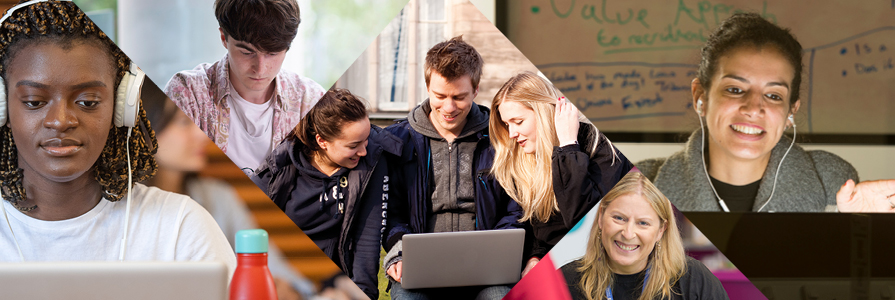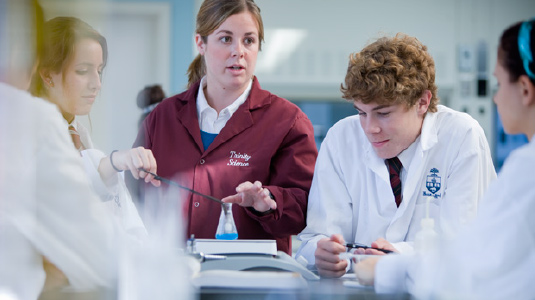SFC news published since 2018. See SFC archived content for earlier news articles.
Helen Bell writes about retraining as a science teacher after a ten-year break.

As a child, I was very fortunate in having both a scientist and a teacher as parents. My mother, a teacher, worked extremely hard as a full-time primary school teacher, sports coach and housewife, while my father was an environmental ecologist. It was he who had the time at weekends to encourage my interest into natural history and set the precedent for me to go down a similar path at university in St Andrews. However, it became clear that funding opportunities into plant biology and ecology were limited compared to those relating to the exploding science of biotechnology. As such, halfway through my degree I swapped all my subjects and studied molecular biology. This eventually led to the completion of a PhD in molecular neuro-oncology in Edinburgh, examining the role of specific proteins in cell death pathways in malignant glioma. I loved cloning and developing constructs to introduce novel proteins into tumour cells in vivo and in vitro and my expertise at the time led me to post-doctoral positions at the Beatson Cancer Institute in Glasgow and the Institute of Molecular Medicine in Aberdeen.
 At this point in my career I was working extremely long hours growing and maintaining cell cultures and helping PhD students. I was also 31 years old. I had just got married and realised that it would be extremely difficult to have a family and work the hours I was working whilst simultaneously applying for funding to start my own research group, which was the next step in my career path. In addition, my husband was a hard-working doctor and would struggle to help with childcare. Therefore, after the birth of my second child I decided to have a break in my career to look after my family. I loved science and desperately missed the camaraderie of the lab and was intending to go back within a few years to maintain my publication record. However, I realised quickly that following a move back to Edinburgh and the birth of a third child it was not going to be easy. I was reluctant to put my children in nursery 8am until 6pm and I strongly felt that the type of science I was involved in, could not be successfully accomplished ‘part-time’. A few years’ break turned into 10 years.
At this point in my career I was working extremely long hours growing and maintaining cell cultures and helping PhD students. I was also 31 years old. I had just got married and realised that it would be extremely difficult to have a family and work the hours I was working whilst simultaneously applying for funding to start my own research group, which was the next step in my career path. In addition, my husband was a hard-working doctor and would struggle to help with childcare. Therefore, after the birth of my second child I decided to have a break in my career to look after my family. I loved science and desperately missed the camaraderie of the lab and was intending to go back within a few years to maintain my publication record. However, I realised quickly that following a move back to Edinburgh and the birth of a third child it was not going to be easy. I was reluctant to put my children in nursery 8am until 6pm and I strongly felt that the type of science I was involved in, could not be successfully accomplished ‘part-time’. A few years’ break turned into 10 years.
However, during that time, a new enthusiasm emerged. I loved explaining and describing different scientific ideas to my own children and others. My involvement in sports coaching (swimming and rugby) gave me confidence with large groups of children of all ages. I had done a little lecturing during my time in Edinburgh, enjoyed it, and ultimately decided that teaching secondary school science was going to be my new career.
It has been quite an arduous but extremely rewarding process. Although I had experience with children and lecturing, work experience in school had to be completed first before applying to Moray House School of Education to do a PGDE (Post Graduate Diploma in Education). At the time I felt this to be unnecessary, however, it is vital before embarking on such a path. Classrooms in Scotland have become extremely diverse since I was at school in the 80s and some of the schools I have been in have had upwards of 40 per cent of students with additional support needs (autistic spectrum disorders, ADHD, English as a foreign language, severe deprivation, amongst others).
The implementation of the Broad General Education within the Curriculum for Excellence means that science is now taught in a practical, cooperative and predominantly verbal way in order to engage students of all abilities. Emphasis is on encouraging above average students to utilise higher order thinking skills to develop and form ideas whilst providing a stimulating ‘active’ learning environment for more disadvantaged children, who may struggle with basic literacy or concentration. Adopting such strategies has been an extremely steep learning curve, especially when my own education consisted of predominantly direct teaching methods, whereby the teacher acts as the information ‘provider’ and the student as the ‘the receiver’. In addition, dealing with children with extreme behavioural issues has been challenging, and I am glad I went into the classroom preceding my PGDE to see what may be in store for my subsequent teaching career.
Nevertheless, my PGDE year was manageable. My own children are older and more self-sufficient, and I have massively enjoyed my school placements and university work. Being older (45 now) has its advantages. I found writing up the written assignments straightforward, having done a fair amount of writing during my scientific career. The school placements were extremely work intensive in terms of planning, although having children the same age as the students and being the same age as their parents gave me confidence when meeting classes (and their parents at parents’ evenings) for the first time. I am still perfecting my style of delivery of each lesson. Differentiating each lesson to meet the needs of each child is hard work and this is something I (and many experienced teachers) continue to work on.
I do not deny that I was fortunate to be in a position to take time off in order to spend 10 years bringing up my children. Nevertheless, going back to work full time after such a long hiatus is definitely not for the faint hearted. Especially if that chosen profession is teaching. However, nothing beats the feeling of seeing the most challenging child in the class have that ‘light bulb’ moment or seeing the most hard-working child in the class get a well-deserved ‘A’ in the end of year test!

